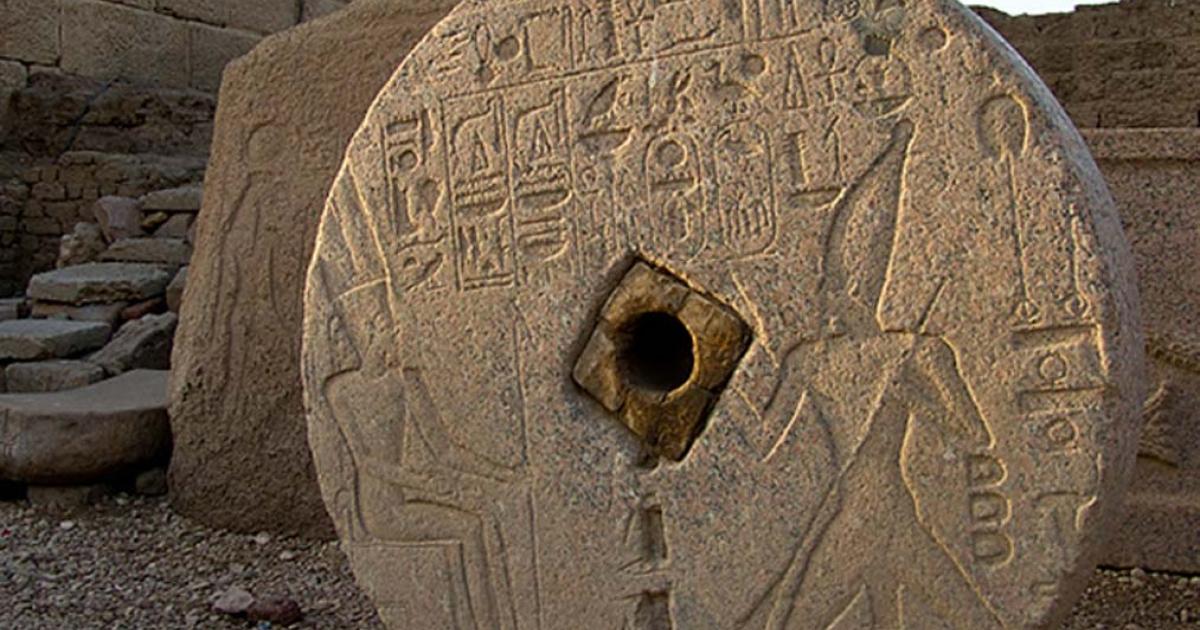
The Evidence is Cut in Stone: A Compelling Argument for Lost High Technology in Ancient Egypt
Most people know of the great construction achievements of the dynastic Egyptians such as the pyramids and temples of the Giza Plateau area as well as the Sphinx. Many books and videos show depictions of vast work forces hewing blocks of stone in the hot desert sun and carefully setting them into place. However, some of these amazing works could simply not have been made by these people during the time frame that we call dynastic Egypt.
Up until the 7th century BC there was very little iron present in Egypt, as this material only became commonly used once the Assyrians invaded at that time; in fact, the ancient Egyptians regarded iron as an impure metal associated with Seth, the spirit of evil who according to Egyptian tradition governed the central deserts of Africa. A few examples of meteoric iron have been found which predate the Assyrians, but this consists largely of small ornamental beads.
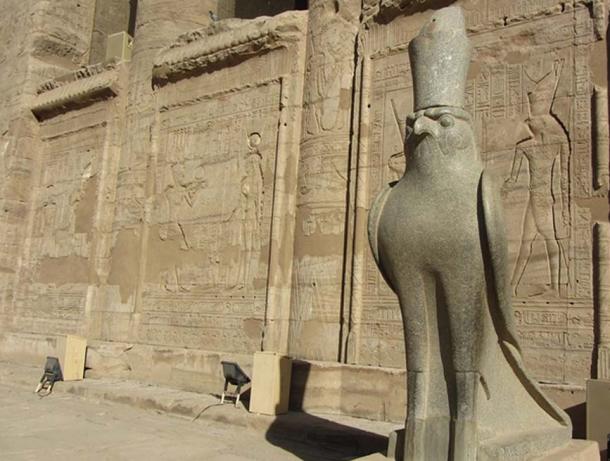
Stone sculpture of Horus in Egypt. Source: Public Domain
The very basic problem that arises is that we find at many of the ancient sites in Egypt finely crafted works in basalt, granite, quartzite and diorite which are very hard stones that can't be shaped efficiently even by hardened iron tools. For most of the history of Egypt, the tools used to shape stone consisted of hardened bronze, which is much softer than iron. In this article, we will see examples of ancient hard stone workmanship which simply could not have been created during the dynastic Egyptian time frame of about 2500 to 1500 BC, when most academics believe they were made. Only a few examples will be discussed, and far more can be seen and read about in my Lost Ancient Technology Of Egypt book.
- Common Tools or Ancient Advanced Technology? How Did the Egyptians Bore Through Granite?
- Boats, Bowling and Moldy Bread: Curious Achievements Ancient Egypt Shared With the World
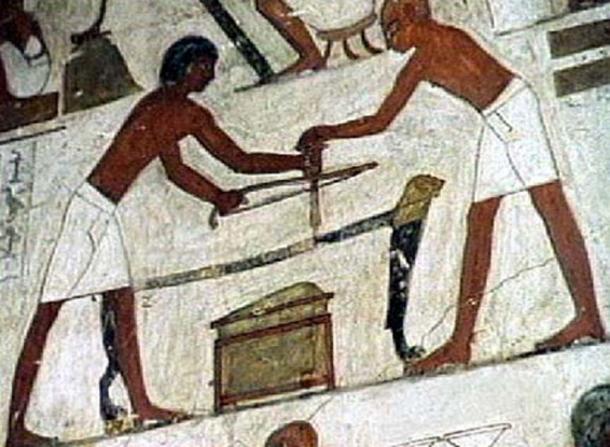
Using common tools to work stone in ancient Egypt. ( Egyptraveluxe Tours)
A Famous Unfinished Obelisk
We start in Aswan, which is close to the border of Sudan, and it is here that we find the famous unfinished obelisk, and another smaller one, still attached to the granite bedrock.
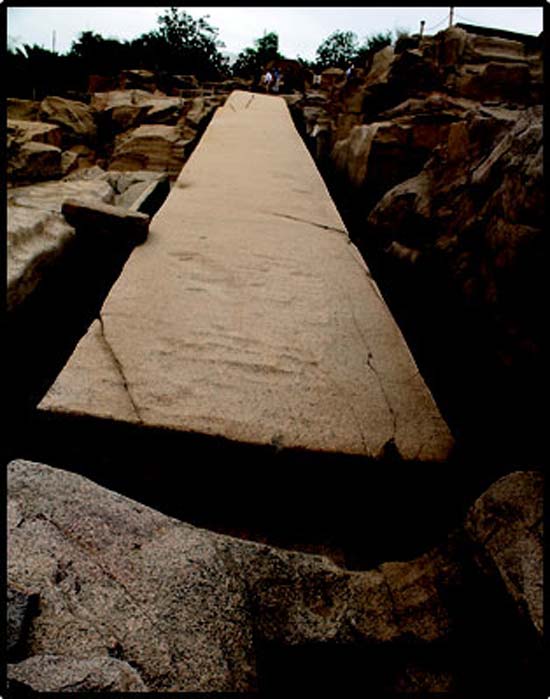
The large unfinished obelisk in the Aswan quarry. (Author provided)
Archaeologists claim the female ruler known as Hatshepsut, who came to the throne in 1478 BC sanctioned the construction of the bigger of the two. It is nearly one third larger than any ancient Egyptian obelisk ever erected. If finished, it would have measured around 42 m (approximately 137 feet) and would have weighed nearly 1,200 tons. The greatest questions that arise are: what tools could have been used to shape this massive stone monument, and how were the Egyptians planning on raising it out of the pit in which it sits, taking into account its immense size. To the former, most Egyptologists believe that round and hand-held stone dolerite pounders were the main tools being used.
In basic terms, any tool should have a greater hardness than the material being cut or shaped. The pink granite of which the unfinished obelisk is composed has a Mohs hardness that sits between the scale of 6 and 7, (the maximum being diamond at 10) and thus is more or less the same hardness as dolerite, making the latter a poor material for shaping the former. And bronze, the other tool substance known to and used by the ancient Egyptians is much softer, being on average 3.5 on the Mohs scale.
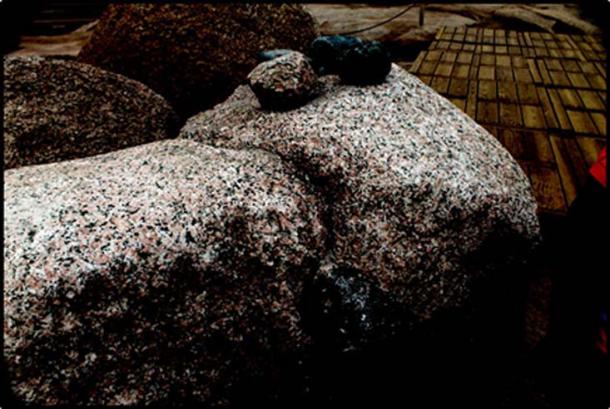
Dolorite pounders on top of a piece of pink Aswan granite. (Author provided)
Other problems encountered at the unfinished obelisk is that there is very little room inside the trench to be able to create a hard blow, and such repeated efforts could also break the dolerite tool. According to engineer and expert machinist Christopher Dunn, author of Lost Technologies of Ancient Egypt: Advanced Engineering in the Temples of the Pharaohs:
'The unfinished obelisk offers compelling indirect evidence regarding the level of technology its creators had reached – not so much by indicating clearly what methods were used, but by the overpowering indications of what methods could not have been used.'
- Egyptian Blue – The Oldest Known Artificial Pigment
- The Philae Obelisk, Hieroglyphs and Understanding a Vanished Culture
What Tool Did the Shaping?
The idea that hand held pounders were responsible for the shaping of the unfinished obelisk has to be dismissed, and yet, what kind of technology could possibly have been responsible? Chris Dunn's opinion is that if one observes the pattern left by the tool which did the actual shaping, especially in the walls of the trenches that surround the unfinished obelisk, there is an even pattern which would unlikely have occurred if hand tools such as the pounders were used. According to Chris:
'The horizontal striations are typical in cutting when the feed of a tool that is removing material pauses along its path, withdrawn to remove waste, and the interruption of the tool leaves a mark on the surface. Also, it could be that as the tool was rocked back and forth against the walls of the trench to clear the waste on the vertical wall, horizontal striations appeared where the tool pressed the cutting surface against the side wall to keep the trench from narrowing.' In other words, some form of technology which the dynastic Egyptians simply did not have. And so this begs the question; if the dynastic Egyptians could not have done this work, and the later Greeks and Romans were not responsible, then who did and when? We have no choice but to entertain the idea that a civilization existed before what we call the pharaohs and in fact had forms of what we would call high technology, and that these people lived in the area prior to 3100 BC.

“Scoop marks” beside the smaller of the two obelisks. (Author provided)
Many will of course ask where the tools are that could have done work such as this. We do know that strange devices and materials have been found in archaeological sites in different parts of the world, and have been labeled, boxed and hidden out of view because they do not fit the conventional historical paradigm. Sir William Flinders Petrie was one of the great Egyptologists of the late 19 th and early 20 th centuries. Petrie found a number of core drills, many of which are now housed in the museum named after him at the University College London in London England. The actual hollow drill bits have not been found, but the cores made of limestone, alabaster, granite and other stones have.
Chris Dunn spent hours in the Petrie museum and was allowed to personally examine some of the drill cores. Here he discusses the characteristics of one of them:
'The most fascinating feature of the granite core Petrie describes is the spiral groove around the core indicating a feed rate of 0.100 inch per revolution of the drill. It was 500 times greater than modern diamond drills, but the rotation of the drill would not have been as fast as the modern drill's 900 revolutions per minute.'
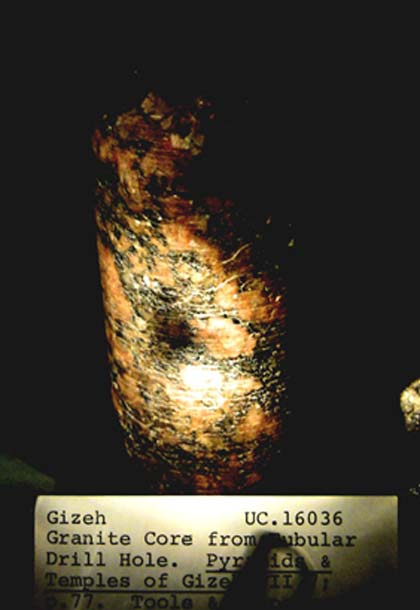
Granite drill core in the Petrie Museum. (Author provided)
The often times quoted idea that these drill cores were achieved using a bow and copper tube with sand used as an abrasive must be thrown out, as no modern replication of these cores has been done to the level of efficiency as discussed above.
Making excavations in 1936, in the archaeological zone of Saqqara, Petrie discovered the Tomb of Prince Sabu, who was the son of Pharaoh Adjuib, governor of the I Dynasty (3,000 BC). Between utensils of funeral objects that were extracted, Emery's attention was powerfully drawn to an object that he initially defined in his report on the Great Tombs of the I Dynasty as: 'a container in the form of schist bowl.' Years later, in his previously mentioned work, Archaic Egypt, he commented on the object with a word that perfectly summarizes the reality of the situation and the discomfort the object causes; " cachibache" (a small hole that threatens to become a much larger hole.)
According to the typical and expected view of the archaeologists and Egyptologists, this object is no more than a tray or the pedestal of some candelabrum, with a design a product of blind chance. I am personally quite amazed that such a controversial piece is still on display in the Cairo museum, and wonder what even odder objects are hidden away in their warehouses.
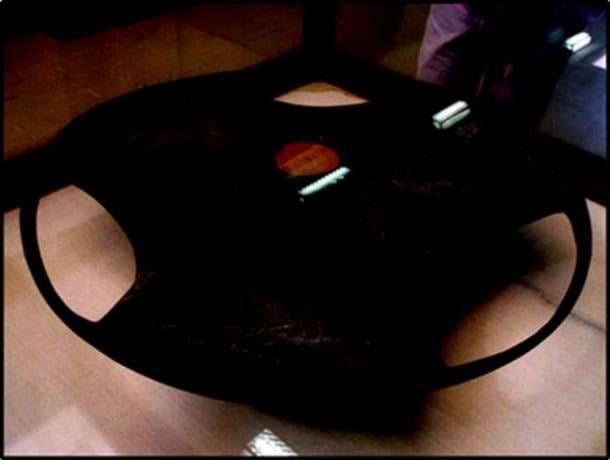
The famous schist bowl or disk. (Author provided)
At Karnak, which is a huge temple complex, we find many examples of ancient core drill holes, and one whose diameter is greater than a human hand. As you can see in the photograph the wall of the drill itself was thinner than 21 st century examples, and even engineers and mining experts that have seen it cannot explain what material the drill would have been made of to maintain its shape and stability at being so thin.
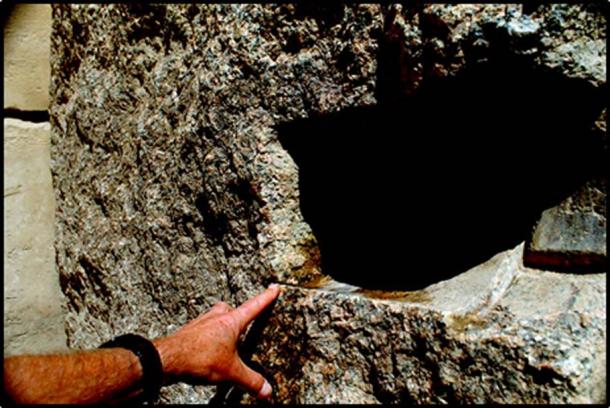
Large drill core at Karnak. (Author provided)
Massive Granite Boxes
Another perplexing site is what is called the Serapeum at Saqqara, containing massive granite boxes which many academics believe were created during dynastic times. However, the boxes in the Serapeum are examples of what engineers such as Chris Dunn, I, and members of the Khemit School have major problems with as regards the conventional Egyptologists’ explanations. According to the latter, in the 13th century BC, Khaemweset ordered that a tunnel be excavated through the solid limestone bedrock, with side chambers designed to contain large granite sarcophagi weighing at least 70 tonnes each, to hold the mummified remains of prize Apis bulls.
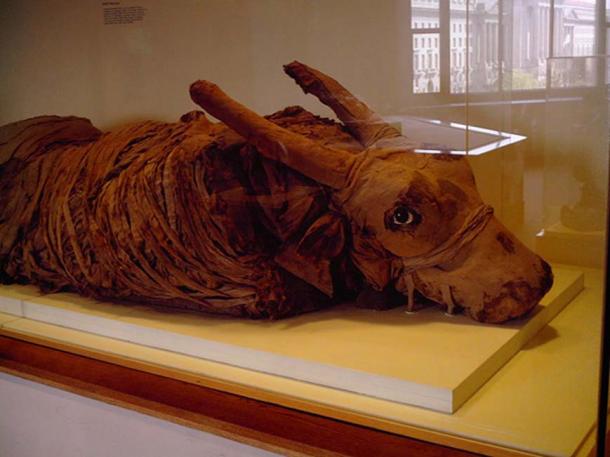
Mummified Bull at the National Museum of Natural History. (Pccromeo/CC BY SA 3.0)
Manufacturer Chris Dunn is a man who knows what precision surfaces look like, as he has been involved in making complex metal parts for the aviation industry for decades. He has studied the boxes in the Serapeum many times, and has been able to measure the flatness of their granite and limestone surfaces using precise gauges. The following are his thoughts, as found in an article on his website www.gizapower.com:
'The granite box inside Khafre's pyramid has the same characteristics as the boxes inside the Serapeum. Yet the boxes in the Serapeum were ascribed to the 18 th dynasty, over 1100 years later when stone working was supposedly in decline. Considering that this dating was based on pottery items that were found and not the boxes themselves, it would be reasonable to speculate that the boxes have not been dated accurately. Their characteristics show that their creators used the same tools and were blessed with the same skill and knowledge as those who created Khafre's pyramid. Moreover, the boxes in both locations are evidence of a much higher purpose than mere burial sarcophagi. They are finished to a high accuracy; their corners are remarkably square, and their inside corners worked down to a dimension that is sharper than what one would expect to find in an artifact from prehistory. All of these features are extremely difficult to accomplish and none of them necessary for a mere burial box.
- 70 Million Mummified Animals in Egypt Reveal Dark Secret of Ancient Mummy Industry
- Did Egyptian Mummification Descend from a More Ancient and, Perhaps, Reversible Preservation Technique?
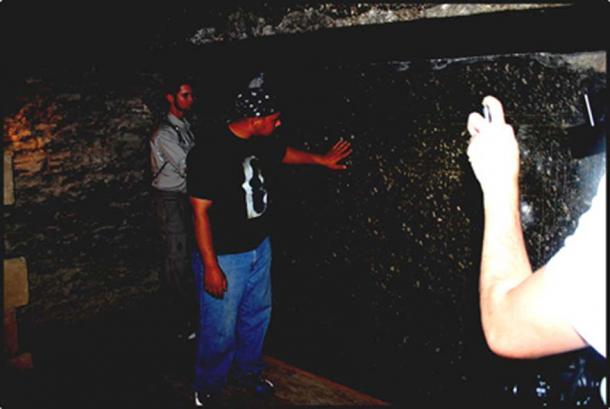
Yousef Awyan feeling the smoothness of the surface. (Author provided)
The manufacturers of these boxes in the Serapeum not only created inside surfaces that were flat when measured vertically and horizontally, they also made sure that the surfaces they were creating were square and parallel to each other, with one surface, the top, having sides that are 5 feet and 10 feet apart from each other. But without such parallelism and squareness of the top surface, the squareness noted on both sides would not exist.
Staggering Implications
While it may be argued that modern man cannot impose a modern perspective on artifacts that are thousands of years old, an appreciation of the level of precision found in these artifacts is lacking in archaeological literature and is only revealed by an understanding what it takes to produce this kind of work. As an engineer and craftsman, who has worked in manufacturing for over 40 years and who has created precision artifacts in our modern world, in my opinion this accomplishment in prehistory deserves more recognition . Nobody does this kind of work unless there is a very high purpose for the artifact. Even the concept of this kind of precision does not occur to an artisan unless there is no other means of accomplishing what the artifact is intended to do. The only other reason that such precision would be created in an object would be that the tools that are used to create it are so precise that they are incapable of producing anything less than precision. With either scenario, we are looking at a higher civilization in prehistory than what is currently accepted. To me, the implications are staggering.
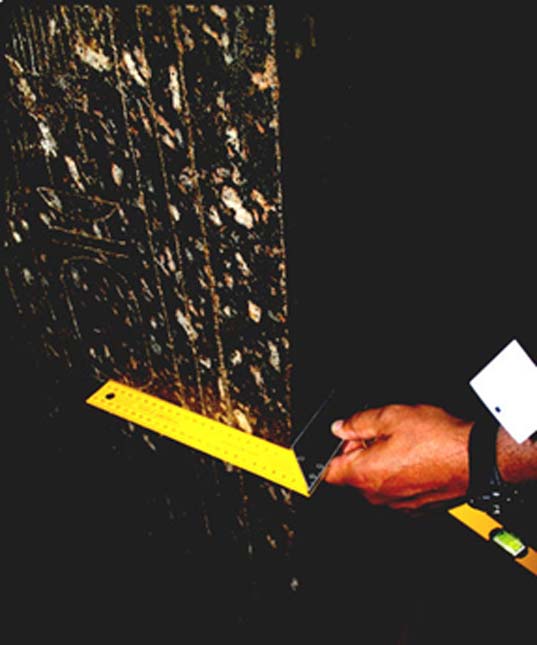
Astonishing precision of one of the Serapeum boxes. (Author provided)
This is why I believe that these artifacts that I have measured in Egypt are the smoking gun that proves, without a shadow of a doubt, that a higher civilization than what we have been taught existed in ancient Egypt. The evidence is cut into the stone.'
What we also have to take into consideration is that most of the boxes in the Serapeum were made of granite, and most likely stone brought from the quarry at Aswan, about 500 miles from Saqqara. Not only that, but the lid of each box was cut from the same stone as the box itself. Why would the makers go to such trouble if bulls, no matter how prized, were the contents? It would appear, as Dunn alluded to, that the Serapeum boxes were not created in the 18th Dynasty and not by the dynastic Egyptians at all, but are remnants of an older and more technologically sophisticated culture, possibly those that are known as the Khemitians.
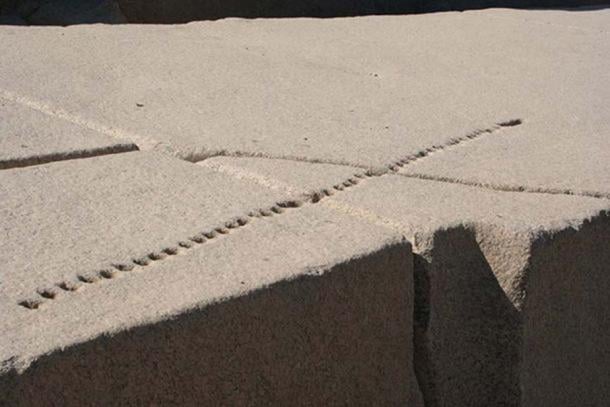
An unfinished Egyptian obelisk at Aswan with holes showing how the granite would be split. (Glenn Ashton/ CC BY SA 3.0)
What you have seen and read here are but a few of multiple examples of artifacts that do not fit the paradigm of the dynastic Egyptians. These artifacts could not have been created by these people, and thus we must conclude that they are older. More information can be gleaned from my book Lost Ancient Technology Of Egypt.
Top Image: Grinding stone, Dendera Temple, Egypt. Source: Chris Beckett/CC BY NC ND 2.0















Comments
A visit to the Serapeum should not be missed during any trip to Saqqara in Egypt. Walking through this mysterious, cavernous vault and encountering these massive, elaborately carved stone sarcophagi is truly unforgettable. However, it should be noted that the reverence for the Apis bull is similar to the veneration of the Ram at Karnak and reflects the influence of a specific astrological age on the ancient Egyptians.
The Age of Taurus the Bull, spanning approximately from 4,200 BCE to 2,000 BCE, closely corresponds with the pre-dynastic and Old Kingdom dynasties. This era aligns with the peak influence of the nearby city of Memphis, which served as the capital of ancient Egypt for much of its history. The god Ptah was one of the chief deities of Memphis and was associated with craftsmanship, while the Apis bull was considered to be his living embodiment. Something extraordinary was happening during this period, as the construction of the Great Pyramid is also believed to have taken place, and all these impressive stone artifacts are anomalies that challenge our understanding of evolution.
“Past Future Journey Nile” doc: https://youtu.be/fGvOrmqcga4
Mike Mannetta
There IS compelling evidence, but there is also the logical mind, and both are ignored or disdained by the prevailing archeaological/anthropological institutions, with their flimsy non-sensical canardish theories. Of course iron rusts and disappears over time, leaving only stone and non-ferrous metals behind, and bones. Prior to the sudden onset of the Ice Age, about 120,000 years ago, when Earth was WITHOUT ice caps, the Richat Structure in now Mauritania, would have been an estuary and perfectly fits the description of Atlantis. Plato tells us Atlantis was destroyed, turned into a mud flat, but now, a dry barren desert at about 400 feet elevation. Of course there are stone ruins in many place in the world, China and Indus Valley, and in the Americas where there was also copious amounts of gold in the possession of a culture that had no capability of the required metal working. So it seems there was an advanced culture, able to cut, move and erect megalith stone-works, as well as carve out subterranean chambers, likely as living quarters in the hot climates, and likely understood iron-working to support their endeavors. So if that culture, possibly the globe over, was decimated 120,000 years ago, with nearly all killed but some lucky ones (who became the ancient Greeks as we know them, with some oral history of the calamity, as Plato knew), no iron would be found. But if there is something MOST COMPELLING, it is that we are being lied to about the past. WHY?
Nobody gets paid to tell the truth.
First of all, the ancient Egyptians did not consider the god Set to be evil (the demonization of this deity began during the Late Kingdom, as more and more pharaohs of foreign ethnicities came to power, bringing different ideologies into mainstream practice). Secondly, the belief that iron was associated with Him is due to the fact that the majority of iron they used was meteoric in origin. Set is known, among many other things, as the Great Lord of the Seven Stars (the constellation most people in today's society know as the Big Dipper). They understood that meteorites containing iron blazed down out of the sky, appearing to come directly from the stars; the correlation, then, between Set and iron becomes obvious. Accordingly, iron was seen as a sacred metal, not an impure substance associated with evil.
~sanbátu~
I applaud all open minded inquiry of ancient evidence. The bottom line is that a main stream dominance of narrative is fascism. The marriage of government ($ ) and industry ( achedemia). Real science is creative experimental inquiry that is duplicatable and scalable. So until the rock on rock hammerers or the parabolic focused laser believers can dupicate these ancient phenomena, we must keep looking with an open mind. Though we have many new ways to determine the age of artifacts, even that is no way difinative either. In the case of ancient megathic stone structures, it's clear we can not duplicate many of them today, and it's also clear that people mainstream archeology say built them, is wrong. Blessings, happy truth hunting!
I found the idea of the feed rate of the core quite fascinating back when I first studied the subject 40 years ago. At the time I had no doubt about the fact that the ancients used concentrated sunlight to disaggragate stone.
When faced with the mystery of thin strong hollow core drills I immediately went to the idea of how they may have incorporated the stone sunlight disagragation cutting method to core drilling. This led to some interesting thoughts on how one would go about this.
Obviously you would have to transmit light into the hole to disagragate the stone, then you would have to eliminate the disagragated material. But if you were cutting the stone with light rather than cutting with the core driller irself the material of the core drill doesn’t have to be all that tough now. In fact all the core drill has to do is allow you to remove the disagragated material.
Exactly how one would transmit light through a glass wall tube into a cut is not such a simple thing, but I have no doubt that a smart enough engineer could come up with a solution. My thoughts have been two or three teeth angled forward with silvering or gold on the back side to reflect transmitted light into the cut path ahead of the teeth. The teeh are then used to lift the disagrgated material rather than cutting. Without the torsional forces of cutting the stone a core drill doesn’t have to be all that tough, in fact you might be able to make one out common glass, add in a little soda to harden it and voila. Controlling the light to cut with that would be somewhat of a trickier proposition.
Just my thoughts over the last 40 years on the core drilling feed rate mystery, and potentially why we have not found any of the core drills in the modern age.
If I had to build a core cutter for stone in this modern age I would try to use compressed air to remove the disagragated material. Even back then that would have been possible with a simple bellows so a core cutting device based on sunlight might not even require the strength to remove the disagragated material removed.
I have never questioned the idea of sunlight used to cut, I am more interested in how they set it all up. The sun moves across the horizon surprising fast, they had to have simple but effective methods of constantly tracking the sun. They also would have needed fairly controllable cutting mechanisms for fine work.
As Einstein stated… “Genius is making complex ideas simple, not making simple ideas complex.” The works and the means of accomplishing those works that the ancients created were nothing short of genius…
As for the idea of disagrgating stone with light, geologist David Lindroth at the US Bureau of Mines, Twin Cities Research center used a 100 watt laser with a beam diameter of 2 mm to cut stone. His cuts were only 2 mm wide and deep but with repeated passes he states that one can cut through any rock on earth. At the height of summer the sun produces 1050 watts of light energy per square meter, that is enough power to utilize a 6.5 mm diameter beam to cut any stone on earth from a parabolic reflector less than 4 feet in diameter.
Pages